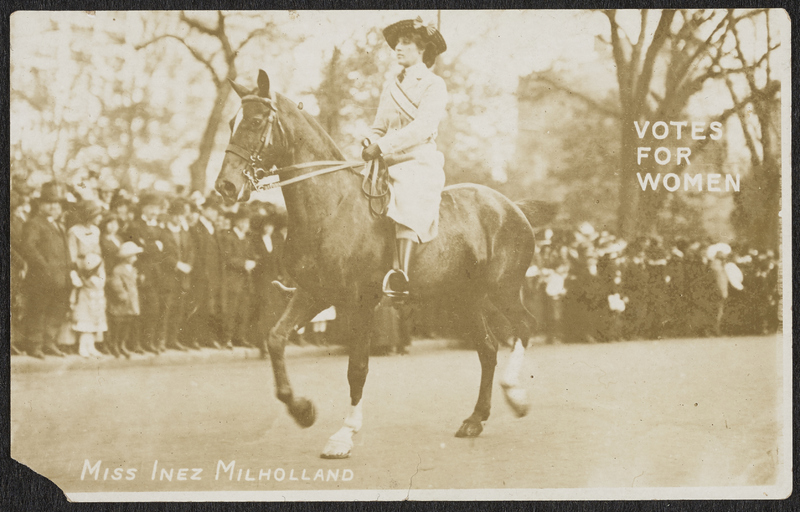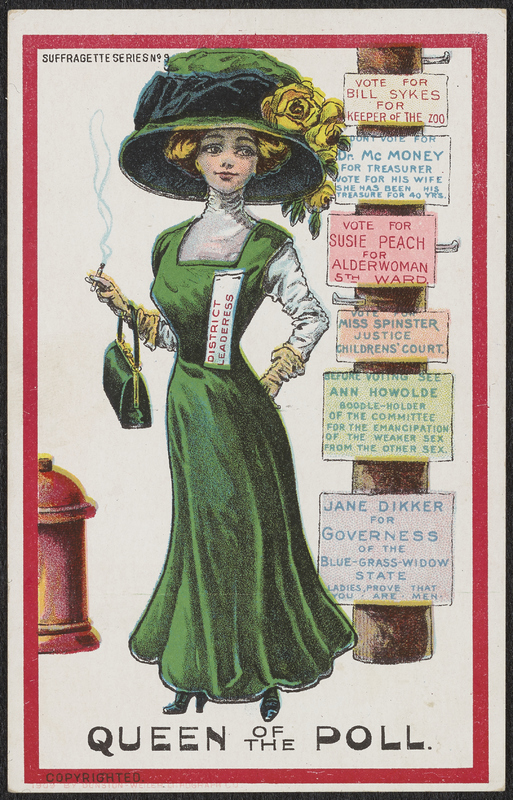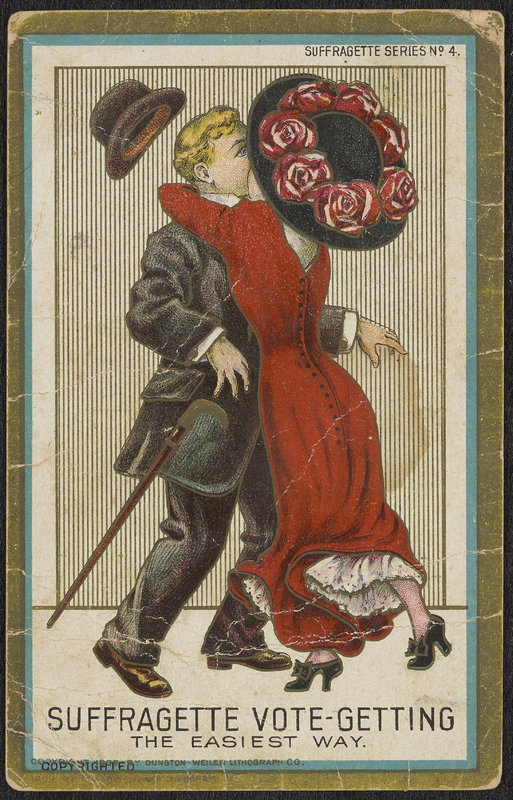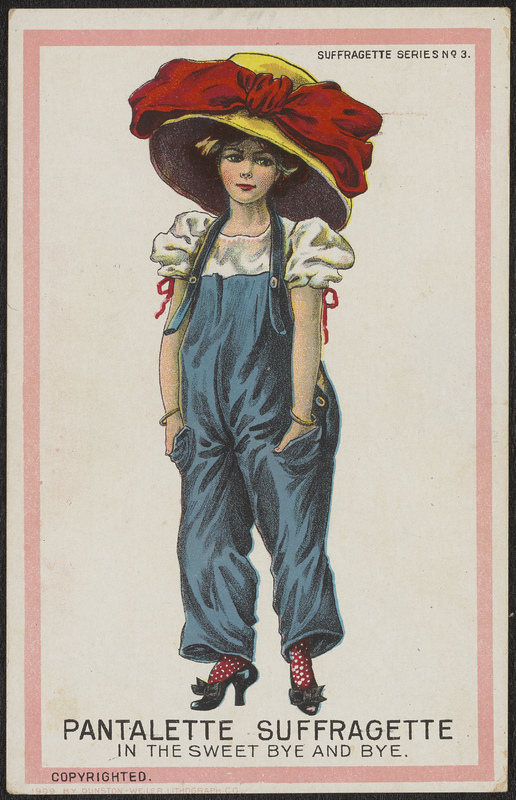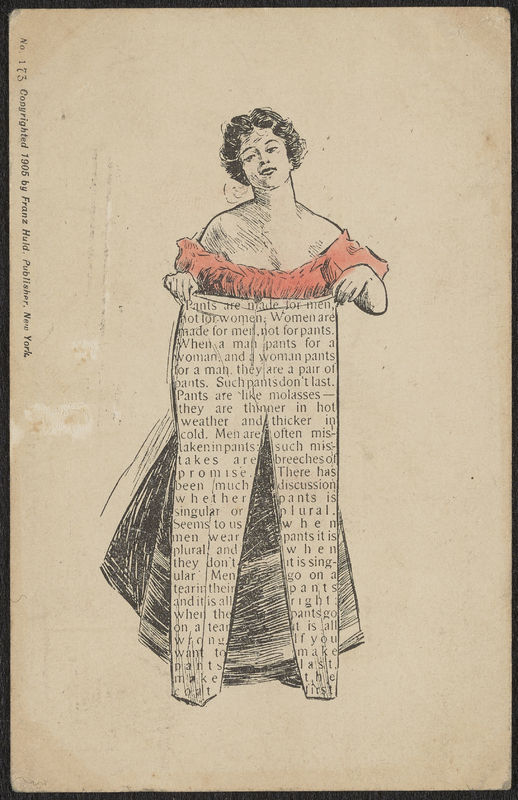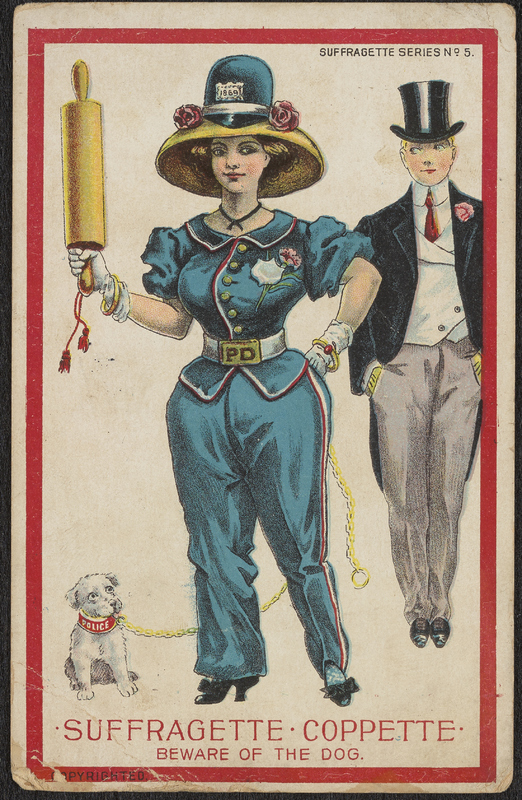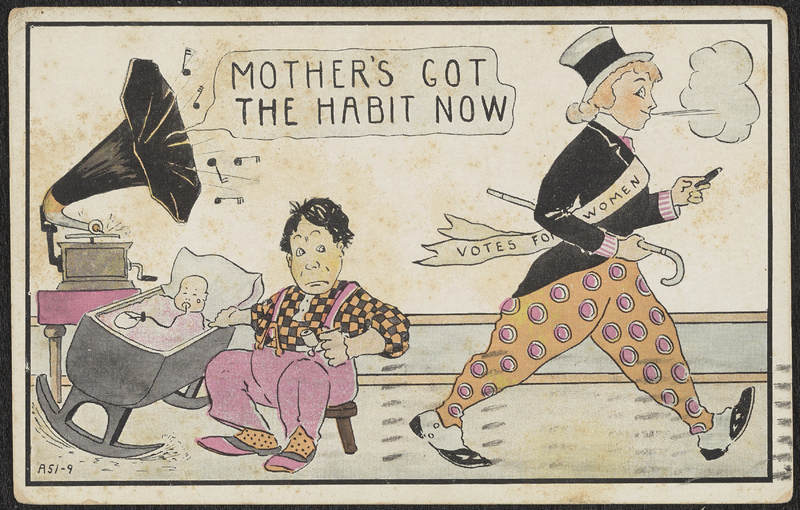The Fashion of Suffrage
When women throughout the country took great strides towards equality, they used fashion as their weapon to further their cause. At the same time, anti-suffragettes took this change as an opportunity and depicted women suffragettes and their fashion in a certain negative way in newspapers, postcards, and other media. While suffragettes portrayed themselves as strong and independent women, abandoning restrictive clothing for more comfortable attire, antagonists of the cause interpreted this boldness as being masculine and too outspoken.
Suffragettes expressed themselves by breaking away from traditional expectations and this was reflected in their fashion choices. Some women's rights activists were anti-fashion, and claimed that to be fashionable was to accept female oppression, especially when it came to the oppressive undergarments, such as corsets, that women were expected to wear. This drastic change in women’s fashion led to controversy and deepened the line between proponents and opponents of the women's suffrage movement. This selection of postcards highlights women’s fashion during the early years of the 20th century, and explores how clothing and attire were used by both sides of the conflict to promote their cause.
Durdona Gaibova, curator
